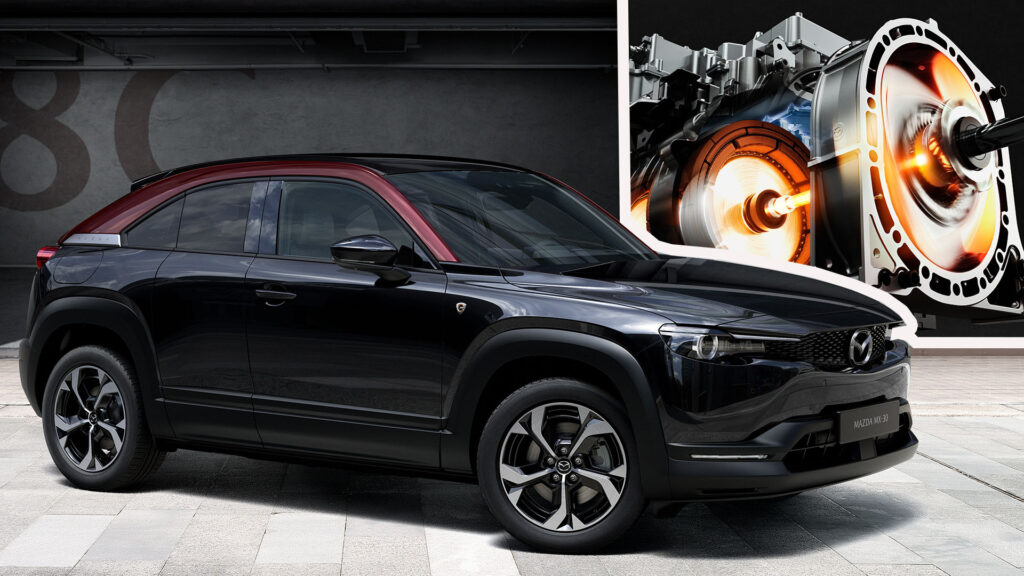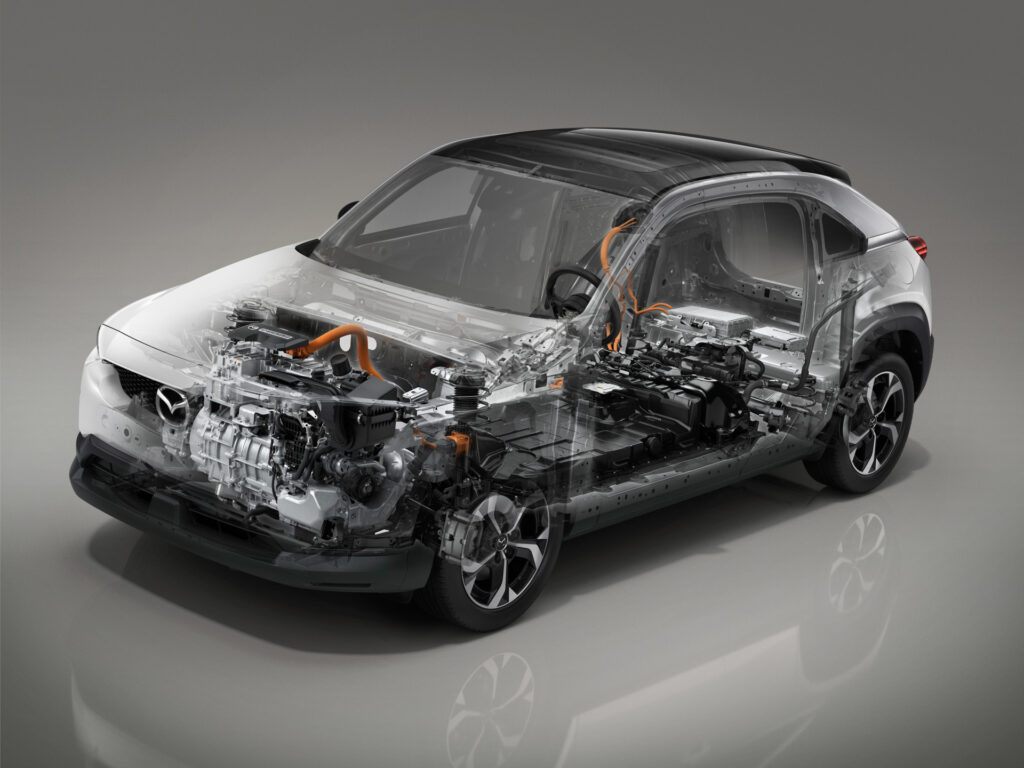<!—->
17.8 kWh battery is half size of pure EV’s and offers 53 miles of EV range, but 373 hybrid miles
4 hours ago
 –>
–> 
by Chris Chilton
–>
Okay, so it’s not the new RX-7 we’ve all been asking for, but a decade after disappearing from showrooms, the rotary engine is back in a new Mazda. The Japanese automaker has answered criticism of its MX-30 EV’s puny range by launching a companion model fitted with a rotary range-extending generator.
Unveiled at the Brussels Motor Show today, the MX-30 e-Skyactiv R-EV goes on sale in Europe this spring and is likely to appear in North America during 2023, though Mazda USA has yet to confirm a date.
The existing MX-30 EV’s 35.5 kWh battery is around half the size of the ones fitted to many EVs and offers just 105 miles (169 km) of range according to the EPA, or 124 miles (200 km) if you go by the more lenient WLTP protocol. But the R-EV’s battery is 50 percent smaller, measuring just 17.8 kWh, giving this MX a meager 53-mile (85 km) pure electric range. Factor in the new 50-litre (13.2 U.S gallon) fuel tank though, and the maximum possible range is 373 miles (600 km).
Thanks to its simpler, more compact design and the extensive use of aluminum the 73 hp (74 PS), 803 cc single-rotor gasoline engine weighs 33 lbs (15 kg) less than the old bi-rotor Renesis rotary that died with the RX-8 in 2012. It lives under the hood alongside the sole electric motor, but only that electric motor ever drives the wheels. There’s compatibility with both AC and rapid DC charging, though the charge times are nothing special because the max charge rate is only 36 kW (the EV version accepts 50 kW). Hook up to a fast DC station and you can fill the battery in 25 minutes, which is longer than it takes an 800-volt Hyundai Ioniq to charge a battery four times the size.
Related: What’s A Car? What’s An SUV? Here’s How The IRS Classifies Vehicles For The EV Tax Credit

Compared with the pure EV version of the MX, the new PHEV makes more power, but less torque. The pony count climbs from 143 hp (145 PS) to 164 hp (166 PS), while torque falls back from 200 lb-ft (271 Nm) to 192 lb-ft (260 Nm). Top speed is unchanged at 87 mph (140 km/h), but the zero to 62 mph (100 km/h) time improves from 9.7 to 9.1 seconds.
advertisement scroll to continue
Drivers can choose between Normal, EV and Charge modes and can manually set the amount of battery power they want to keep in reserve. Every time that level is reached the engine automatically kicks in, as it does in EV mode when you boot the right pedal past a detent, which works like the kickdown switch in an automatic car. Even in normal mode the car will attempt to keep the engine out of play unless it’s really needed, such as under hard acceleration.
What’s really interesting is that Mazda has pitched the new PHEV at the same price point as the existing EV, giving buyers a simple choice. In the UK the lower two PHEV trim levels (£31,995 Prime-Line and £33,095 Exclusive-Line) cost exactly the same as the EV version, while top-spec Makato grades of the rotary model carry a small £450 ($550) premium over the pure-electric car. Mazda is also offering a limited edition £37,950 R-EV Edition R, the R standing for ‘return’, which features various rotary logos on the floor mats and headrests and comes exclusively in Jet black with Maroon Rouge pillars.
What do you think of the spec of the new plug-in MX-30? Is it more likely to make you buy Mazda’s funky crossover?
 –>
–> 
